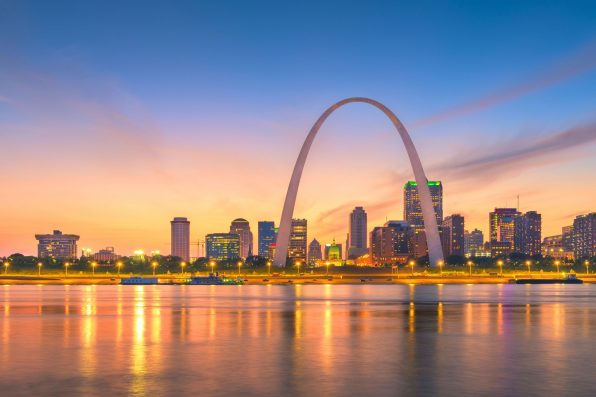How The 1904 Marathon In St. Louis Turned Into One Of The Most Bizarre Occurrences In Olympic History

In the entire history of the Olympics, the most bizarre occurrence has to be during America’s first games, which were held in St. Louis in 1904. That year, the games were tied to the World Fair, which celebrated the 100th anniversary of the Louisiana Purchase.
The fair offered its own sporting events, drawing attention away from the actual games. For instance, the purpose of the Olympics’ marathon was to honor Greek heritage and connect the ancient to the modern. But the 1904 marathon was more silly than serious, in keeping with the fair’s carnival-like atmosphere.
A few of the runners who participated in the 1904 marathon were recognized athletes who had previously run in the Boston Marathon or other Olympic marathons. However, the majority of the field consisted of middle-distance runners and novices who had never competed in a marathon before.
One of the runners was named Fred Lorz, an American who worked as a bricklayer. He trained at night and earned his spot in the Olympics after running in a five-mile race sponsored by the Amateur Athletic Union.
There were also two men from the Tswana tribe of South Africa, Len Taunyane and Jan Mashiani. They were in St. Louis for the World Fair and were the first black Africans to compete in the modern Olympics.
Another runner was Félix Carvajal, a former mailman from Cuba. He raised enough money to come to the United States by showing off his running skills throughout Cuba. Once he got to New Orleans, he was said to have gambled away all his money and had to hitchhike to St. Louis.
He arrived at the starting line dressed in a white, long-sleeved shirt, long trousers, a beret, and walking shoes. A fellow competitor took pity on him and cut off his pants at the knee to make it easier for him to run.
The race began on August 30 at 3:03 p.m. Temperatures reached the low 90s, and the unpaved 24.85-mile course threw up dust clouds into the humid air, which made it even more difficult for the athletes to breathe.
The course had seven hills, some of which were incredibly steep. The men had to watch out for cracks in the road, traffic, trolley cars, delivery wagons, railroad trains, and people walking their dogs.

Kovacs – stock.adobe.com – illustrative purposes only
Additionally, there was only one available freshwater stop during the whole race. It was located 12 miles from the start of the race. A total of 32 runners started the race that day, but by the end, only 14 would finish.
The first runner to cross the finish line was Fred Lorz. But, just as he was about to receive the winner’s trophy, he was revealed to be an impostor. It turned out that he had hitched a ride in a car for 11 miles after he began suffering from cramps.
As for Carvajal, he stopped at an orchard at one point to snack on some apples. Unfortunately, they were rotten and gave him stomach cramps. So, he laid down on the side of the road and took a nap. He still finished in fourth place.
The winner of the race was Thomas Hicks, an experienced runner from Massachusetts. At the 10-mile mark, he begged his support team for a drink.
Instead, they washed out his mouth with warm distilled water. At seven miles from the finish line, they fed him a mixture of strychnine and egg whites.
Back then, strychnine was commonly used as a stimulant in small doses. Today, the CDC considers it a strong poison mainly used for killing rats.
Hicks started hallucinating during the race. It took everything in him to continue dragging himself toward the finish line.
Finally, his trainers had to carry him over the line because he had grown so limp. He was declared the winner.
No event would ever come close to the strangeness of the 1904 St. Louis Olympic Marathon.
Sign up for Chip Chick’s newsletter and get stories like this delivered to your inbox.
More About:Sports





